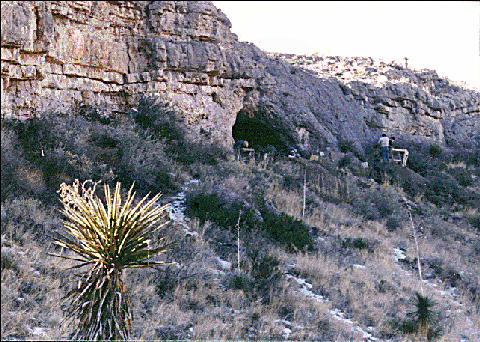
When humans entered the New World has long been a subject of controversy. Traditionally, the Clovis Culture, named after Clovis, New Mexico, and radiocarbon-dated around 11,200 years ago, has been considered to represent the oldest peoples in the lower 48 states. Sites dated older have summarily been dismissed by advocates of Clovis First. The Clovis time barrier finally was broken by general acceptance of an age of about 12,500 years ago for the South American Monte Verde site in southern Chile.
A northern Chihuahuan Desert site in southern New Mexico has joined the
sites claiming even greater antiquity. This site, a small cave on military lands east
of Orogrande, has produced evidence of human presence over 35,000 years ago. The
evidence includes human hair and fingerprints in now-hardened clay. Even older evidence
is suggested by the presence of a bone thought to have been deliberately broken to
obtain the internal bone marrow. The recent publication of a series of studies
presenting the evidence now leaves the question: Under attack by proponents of late
entry, will the evidence hold up? 
Contributor: Arthur H. Harris, Laboratory for Environmental Biology, Centennial Museum, University of Texas at El Paso.
Desert Diary is a joint production of the Centennial Museum and KTEP National Public Radio at the University of Texas at El Paso.

Pendejo Cave. Photograph by A.H. Harris.
MacNeish, R. S., and J. G. Libby, eds. 2003. Pendejo Cave. University of New Mexico Press, Albuquerque. 526 pp.